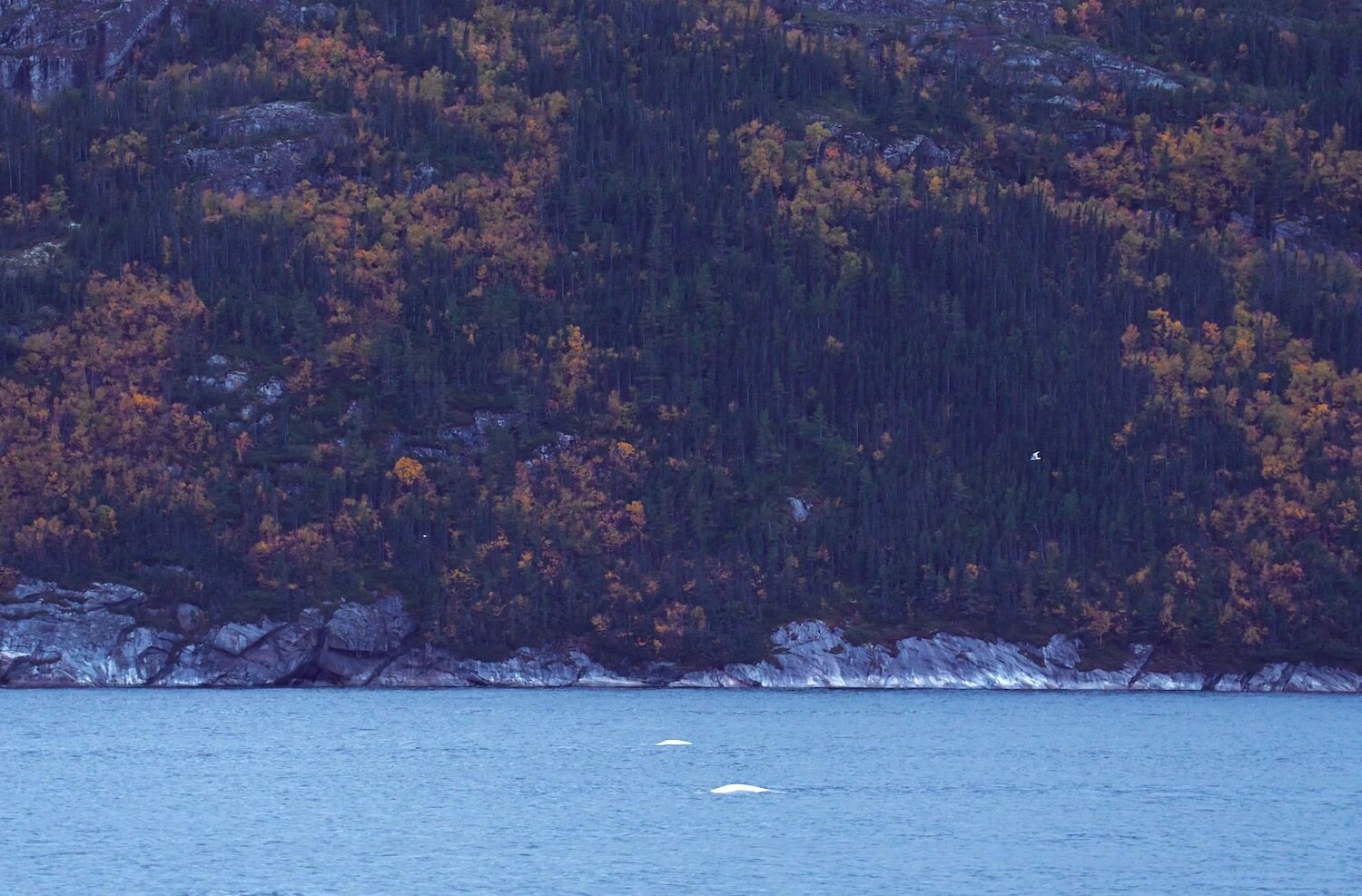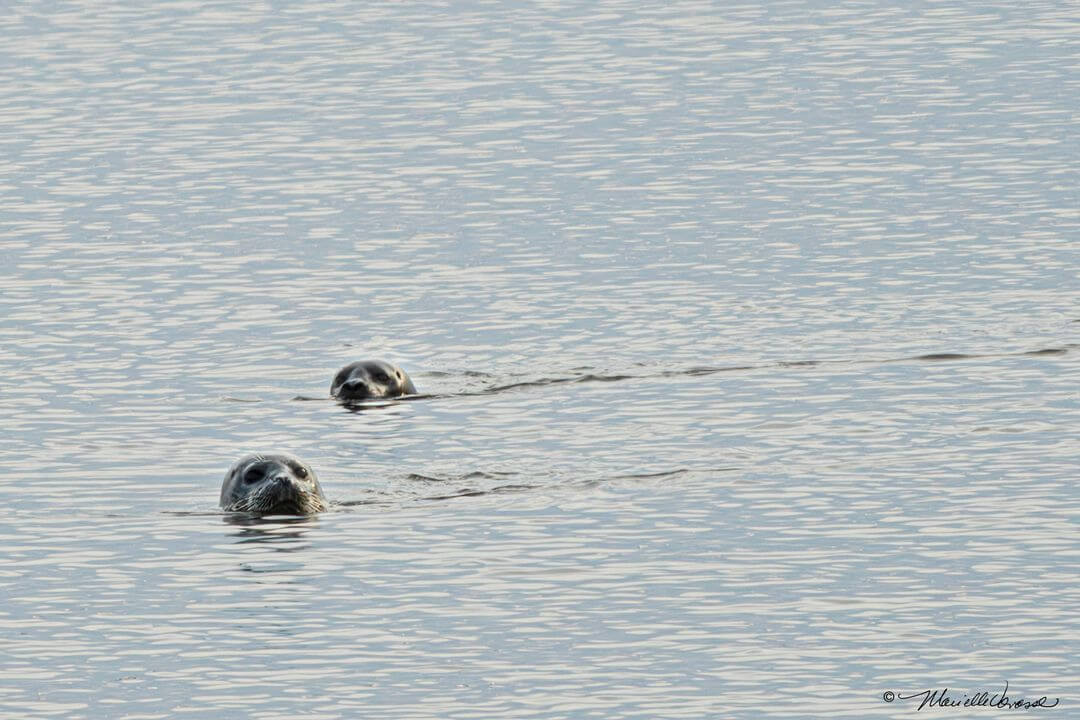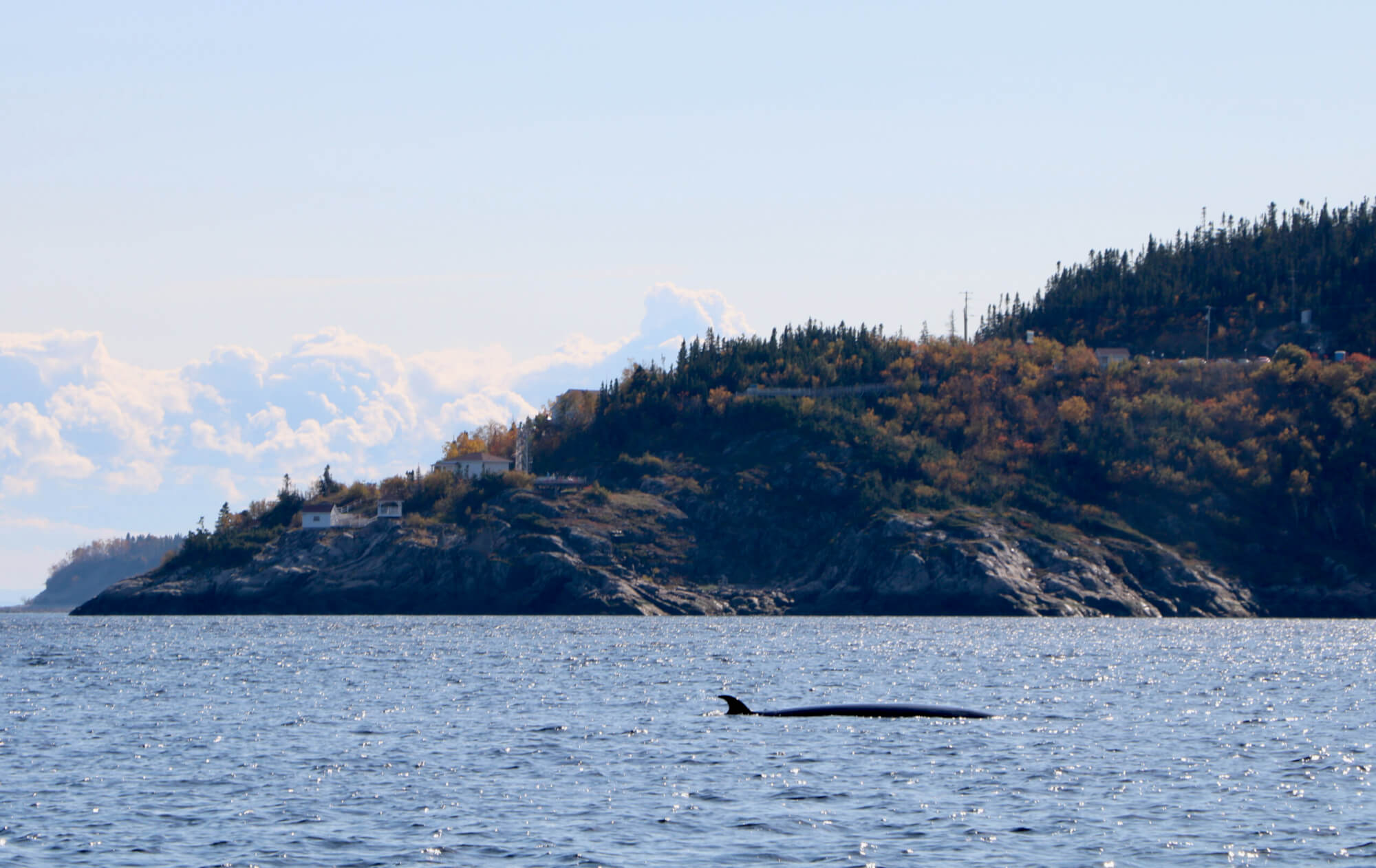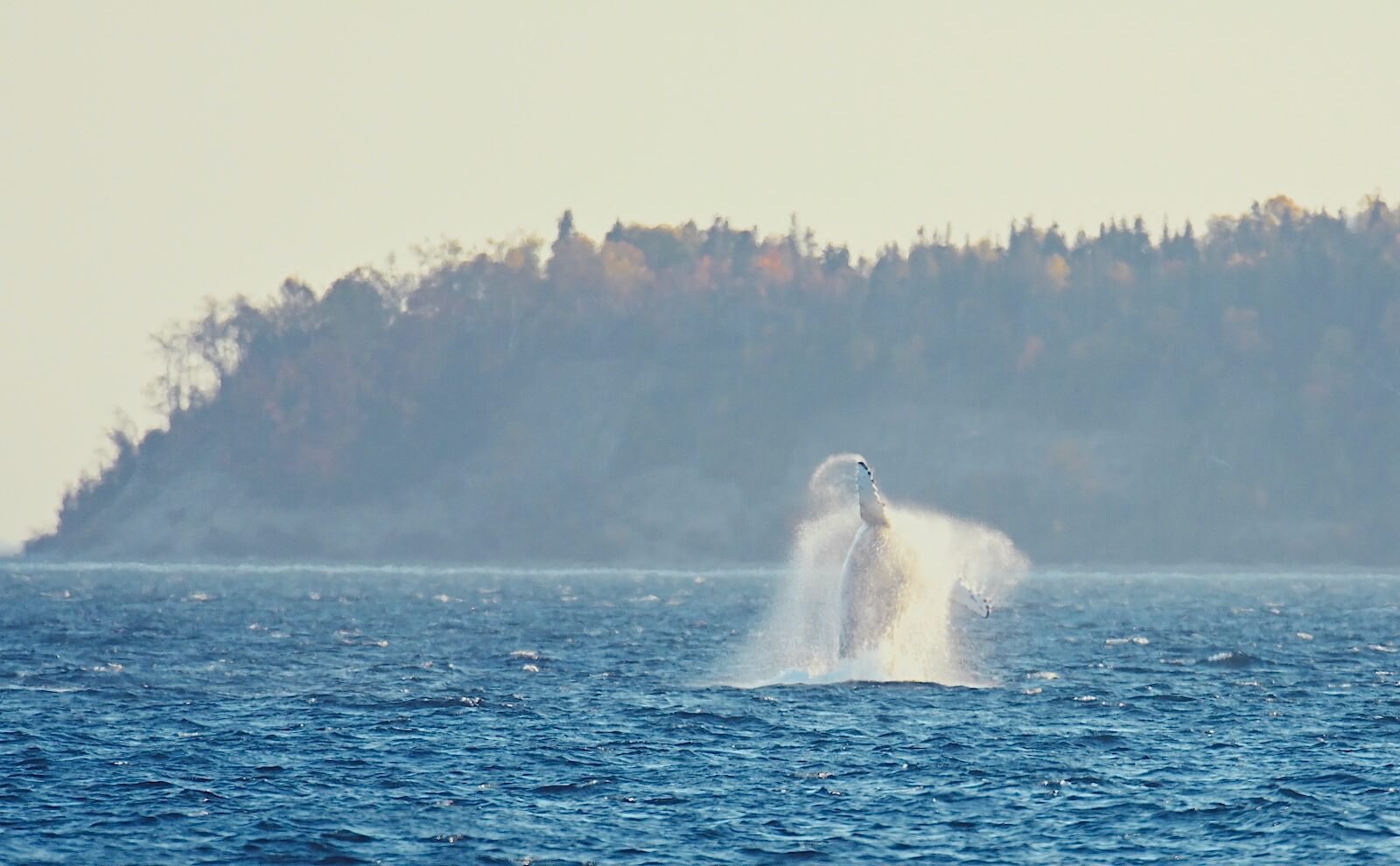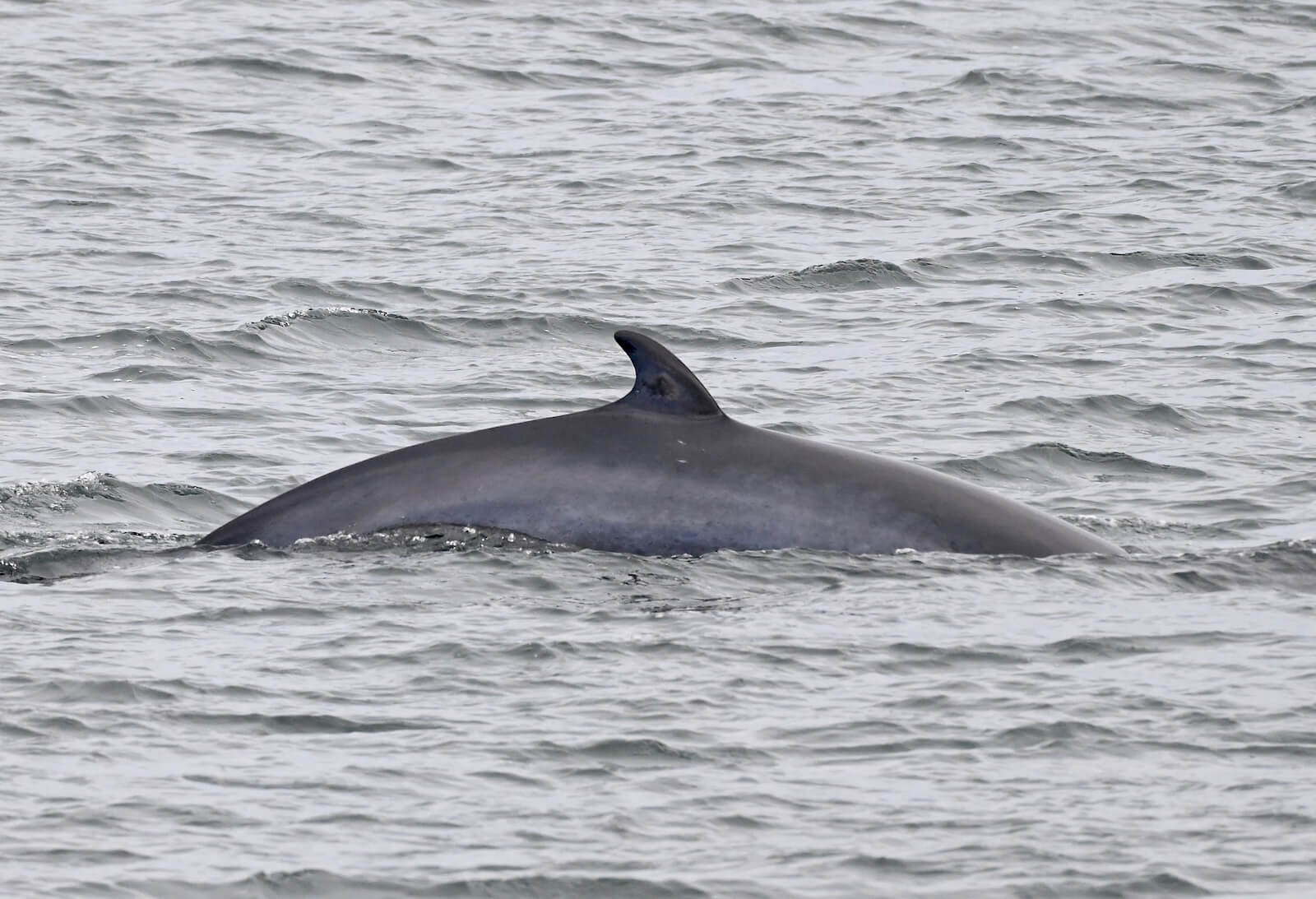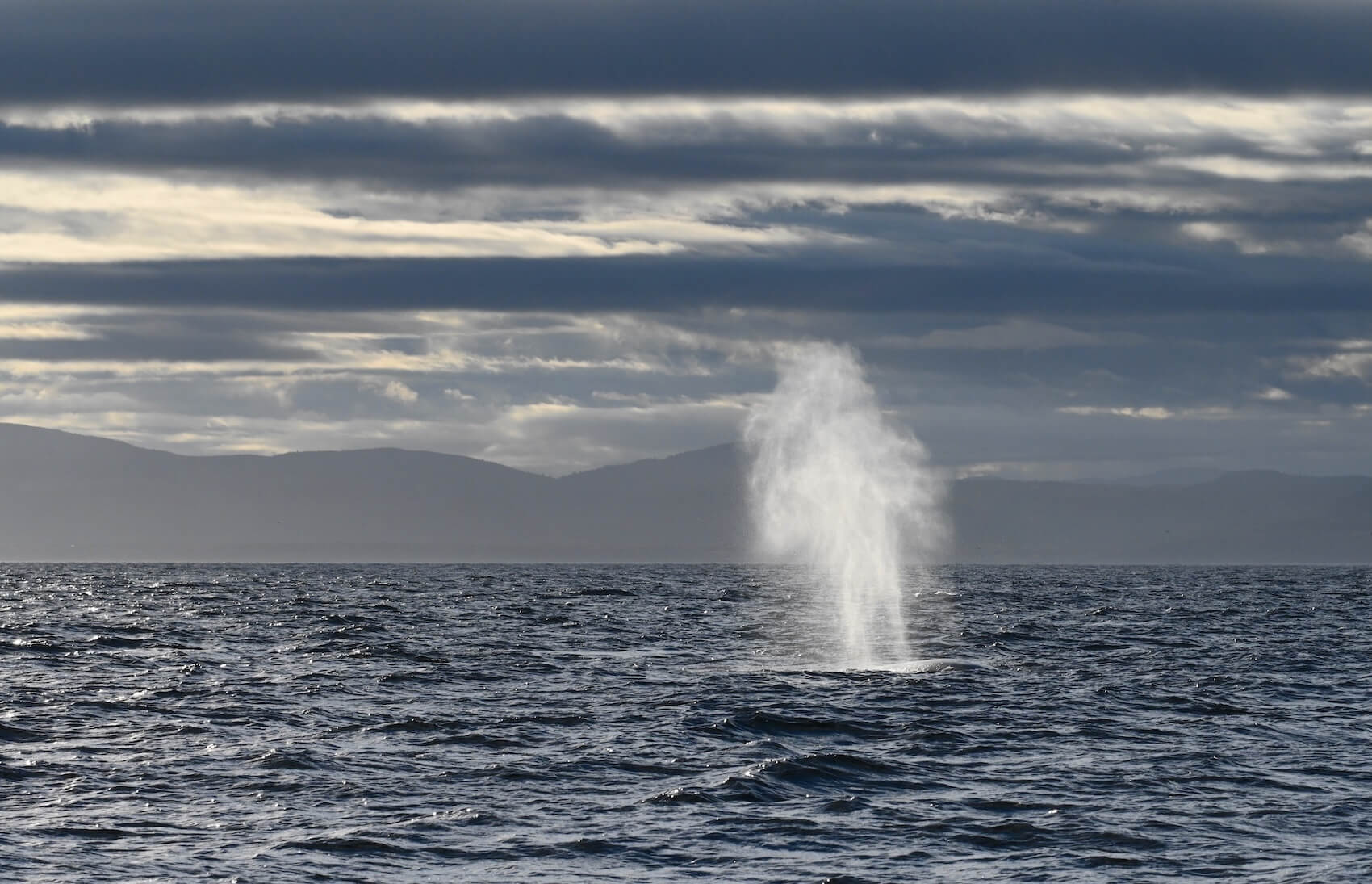In the St. Lawrence, the blazing colours of the coast contrast with the dark backs of humpback whales, the bright white of belugas and the blue water. In this multicoloured season, harbour and grey seals also add a touch to the poetic scenery.
Did you know that you can track the evolution of autumn foliage using an interactive map? Published by Tourisme Québec and updated weekly, this is an ideal tool for planning a weekend of whale watching in an enchanting setting! The evolution of colours is divided into six phases, ranging from “beginning soon” to “end.” As of the October 10 update, several coastal regions, including Charlevoix, Côte-Nord, Bas-Saint-Laurent and Gaspésie, were either at “mid-point” or “near peak.”
Pinnipeds from the trail and from the road
A hiker tackling the International Appalachian Trail in Forillon National Park enjoyed an opportunity to admire seals! While pacing the shores of the gulf, he observed several harbour seals resting in a banana position on the rocks. On another day, from a trail overlooking the water, he even saw a seal chasing a fish while performing a few leaps.
In Gaspé Bay, the presence of no fewer than four fin whales was reported on October 10, as were three blue whales over the weekend. A Gaspé woman comments on the presence of a handful of pinnipeds: “Grey seals chowing down on striped bass, and harbour seals in Gaspé Bay.”
On the other side of the river, in Sept-Îles, a local resident sees two harbour seals gracefully slipping through the water. From Baie-Comeau, sightings from shore are down, notwithstanding a few minke whales lingering in the sector. In Charlevoix, a marine mammal enthusiast driving down the coast takes advantage of a stop in Port-au-Persil to marvel at the wildlife. “We saw a gorgeous large minke whale right in front of the wharf! And two grey seals, too.”
Marine mammals from Tadoussac to Les Escoumins
In front of the Marine Mammal Interpretation Centre, dozens of belugas have been plying the waters. “Lots of belugas in the fjord from the ferry,” says one enthusiast, “with at least two minke whales as well! The weather was overcast, so it was quite easy to see the white belugas, which stood out against the colourful walls of the fjord.” So you see, a slightly cloudier day also has its advantages!
About fifty grey seals made a remarkable entrance into Tadoussac Bay. A few days earlier, a sailor had spotted sand lance feeding on copepods. Grey seals often feed alone, though they may on occasion hunt in groups. Had they come here in search of sand lance? Their highly varied menu does indeed include this species as well as crustaceans and herring. These opportunistic eaters can consume 7.5 to 12.5 kg of prey per day.
Humpback or hallucinations?
A research assistant from the Group for Research and Education on Marine Mammals (GREMM) could not believe her eyes after a couple of whales fleetingly passed through her field of vision. As the team navigated the fjord, she spotted a huge splash near the ferries, which suggested it was a large whale, but she was the only one that saw it. “When I returned from the field, I was walking toward the CIMM [Marine Mammal Interpretation Centre] and looking up the fjord I saw a humpback whale diving very close to the rocks!” When she asks a colleague working on the premises, the co-worker mentions that she has seen nothing but minke whales all day. “So now I’m starting to second-guess my observation. It’s true that the light was sort of odd given that it was late afternoon and fall, and then for 5 or 10 minutes all I saw near the CIMM were minke whales surfacing.” As she winds down her day, another colleague exclaims that there was a humpback in the Saguenay! “You really have to be in the right place at the right time,” she concludes.
Where are the whales this week? Observation map
These data were reported by our network of observers. They give an idea of the presence of whales and in no way represent the actual distribution of whales in the St. Lawrence. Just for fun!
Click on the whale or seal icons to discover the species, the number of individuals, additional information or photos of the sighting. To enlarge the map, click on the icon in the top right-hand corner. The map works well on Chrome and Firefox, but not so well on Safari.
To display the list of sightings, click on the icon in the top left-hand corner.
Thanks to all our collaborators!
Special thanks go out to all our observers who share their love for marine mammals with us! Your encounters with cetaceans and pinnipeds are always a pleasure to read and discover.
On the water or from shore, it is your eyes that give life to this column.
Odélie Brouillette
Thalia Cohen-Bacry
Guylaine Côté
Véronique Gélinas
Ninon Lambs
Jade-Audrey Lavergne
Mathieu Marzellière
Yael Medav
Élizaneth Mélis
Diane Ostiguy
Renaud Pintiaux
Chloé Pazart
Pascal Pitre
Andréanne Sylvain
Marielle Vanasse
And to all the others!
Additionally, we would like to acknowledge the following teams that also share their sightings:
Sept-Îles Research and Education Centre (CERSI)
Group for Research and Education on Marine Mammals (GREMM)
Marine Mammal Observation Network (MMON)
Quebec Marine Mammal Emergency Response Network (QMMERN)
Mingan Island Cetacean Study (MICS)
Would you also like to share your observations?
Have you seen any marine mammals in the St. Lawrence? Whether it’s a spout offshore or just a couple of seals, drop us a line and send your photos to [email protected]!


